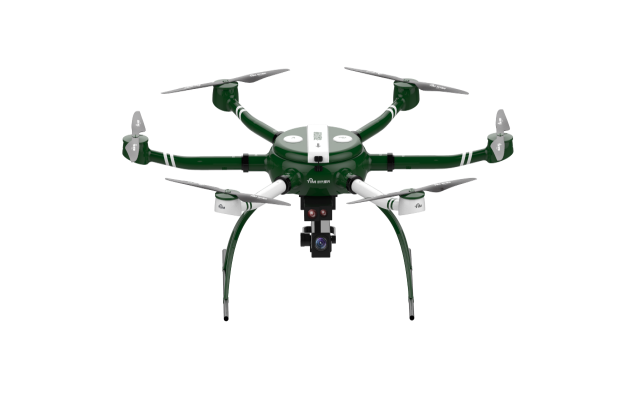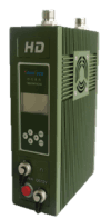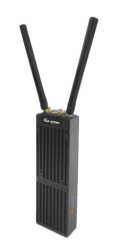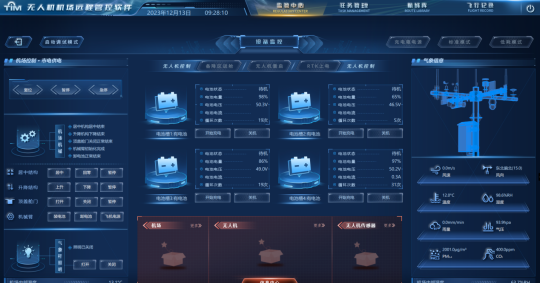The air-ground integrated networking technology is an advanced communication solution that combines various technologies such as drones, cluster self-organizing networks, and soldier-borne video transmission. The main purpose of this technology is to establish an efficient and stable communication link between frontline accident scenes and rear command centers, ensuring real-time information transmission and smooth command operations.

First, the front-end video collection part mainly utilizes soldier self-organizing networks paired with audio, video, and data collection terminals, as well as tethered drones equipped with high-definition gimbal cameras to collect audio, video, and data from the accident scene. The information collected is transmitted back to the on-site emergency command vehicle in real-time.
Secondly, the on-site emergency command vehicle is the core part of the entire network. It can not only observe the accident scene in real-time through audio, video, and data transmitted back via a decentralized self-organizing network but also transmit audio and video images back to the rear command center through satellite and 4G/5G private networks. At the same time, it can receive instructions from the rear command center and relay these instructions to the accident scene.
Moreover, when the distance is insufficient, the drone self-organizing network relay will be activated to expand the coverage of the wireless self-organizing network. This relay method ensures that communication stability and continuity can be maintained even in complex terrains and environments.

Recommended Performance for Soldier-Borne Video Transmission:
1.Utilizes advanced digital modulation and demodulation technology, with high spectral efficiency;
2. Employs digital image compression standards, supporting broadcast-quality images;
3. Supports high-speed mobile transmission and non-line-of-sight propagation;
4. Audio can be selected for left/right channels/SDI/HDMI;
5. Supports automatic identification of HDMI/SDI/CVBS and prioritizes AV/SDI/HDMI;
6. Under normal conditions, transmission distances range from 500m to 5km;
7. Supports low latency and standard modes.

Recommended Performance for Self-Organizing Network Devices:
1. Self-organizing network devices are compact and lightweight, equipped with removable lithium batteries, allowing for handheld use, drone mounting, or carried on a soldier’s back.
2. Quick network entry and automatic multi-hop relaying can provide voice group calls, video return, and relay transmission for soldiers and tactical teams, enabling efficient collaboration.
3. In open ground environments, transmission distances can exceed 10km, and in obstructed environments, range from 300 to 1000m.
In summary, air-ground integrated networking technology achieves efficient and stable communication between frontline accident scenes and rear command centers by combining drones, cluster networking, and soldier-borne video transmission technologies. This technological solution has broad application prospects in military, rescue, and public safety fields.

Application Prospects of Air-Ground Integrated Networking Technology
With the continuous advancement of technology, air-ground integrated networking technology, as an advanced communication solution, has increasingly broad application prospects. This technology, through the integration of drones, cluster networking, and soldier-borne video transmission, provides strong support for military, rescue, smart cities, unmanned driving, remote medical care, intelligent agricultural management, environmental protection monitoring, and resource sharing optimization.
1. Enhanced Military Communication
In the military field, air-ground integrated networking technology can significantly improve the real-time, stability, and confidentiality of communication. Drones and cluster networking technologies can quickly establish temporary communication networks, providing reliable guarantees for battlefield command, information transmission, and reconnaissance, thereby enhancing the effectiveness of military operations.
2. Disaster Emergency Response
During natural disasters, air-ground integrated networking technology can quickly establish temporary communication networks, providing essential support for information transmission and coordination in disaster areas. Drones can rapidly reach disaster areas and achieve stable communication with the ground through cluster networking technology, providing real-time images and data support for rescue operations.
3. Smart City Development
Smart cities are an inevitable trend in urban development, and air-ground integrated networking technology is one of the keys to achieving smart cities. This technology can use drones to monitor all corners of the city in real-time, aggregating various information to the smart city management platform, providing data support for urban management, traffic planning, and environmental monitoring.
4. Unmanned Driving Traffic
Unmanned driving traffic is the future trend of transportation, and air-ground integrated networking technology provides reliable communication guarantees for unmanned vehicles. Drones can serve as information relay stations for unmanned vehicles, ensuring smooth communication between vehicles, thus improving the safety and efficiency of unmanned driving systems.
5. Remote Medical Services
Through air-ground integrated networking technology, medical personnel can achieve remote diagnosis and treatment of patients in remote areas. Drones can quickly deliver medical equipment and medications to patients’ locations and achieve real-time communication with medical centers through cluster networking technology, providing timely and effective medical services to patients.
6. Intelligent Agricultural Management
In agriculture, air-ground integrated networking technology can enable real-time monitoring and intelligent management of farmland. Drones can be equipped with various sensors to monitor the agricultural environment and transmit data to agricultural management platforms through cluster networking technology, providing decision support for farmers and improving agricultural production efficiency and quality.
7. Environmental Protection Monitoring
Environmental protection is an important issue of common concern for society, and air-ground integrated networking technology provides strong support for environmental protection monitoring. Drones can be equipped with environmental monitoring devices to monitor air quality, water quality, noise, etc., in real-time, and transmit data to environmental protection departments, providing a scientific basis for environmental protection decision-making.
8. Resource Sharing Optimization
Air-ground integrated networking technology can achieve the sharing and optimized allocation of various resources. Through drones and cluster networking technology, resource information scattered in various corners can be integrated and shared, maximizing resource utilization. This is significant for improving social efficiency and reducing resource waste.
If you find this helpful, please follow, like, and share!
For other inquiries, contact WeChat: dh2541